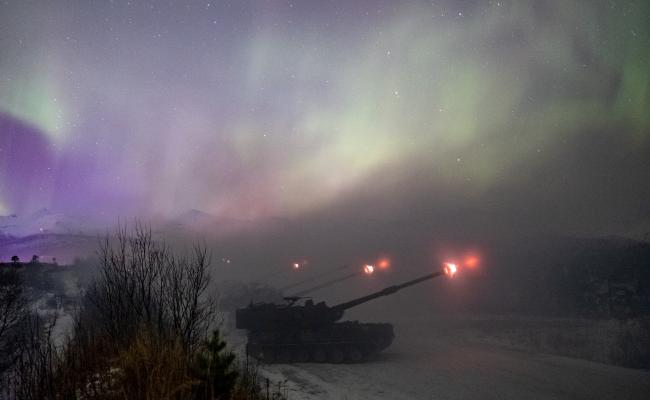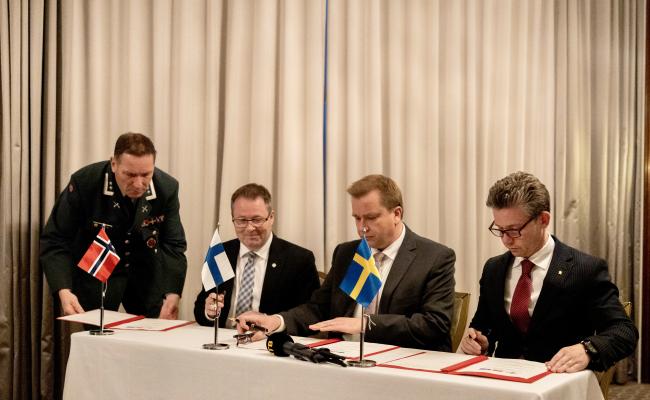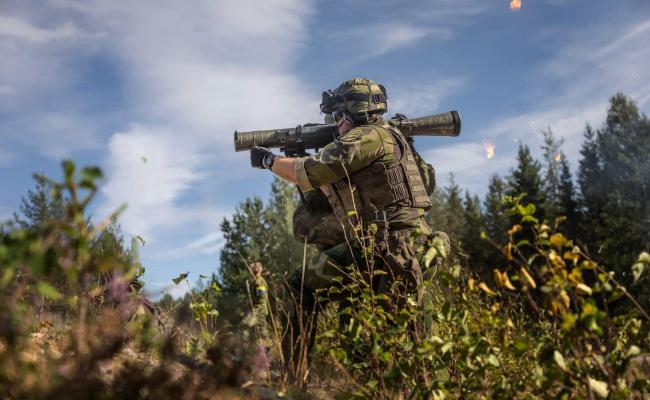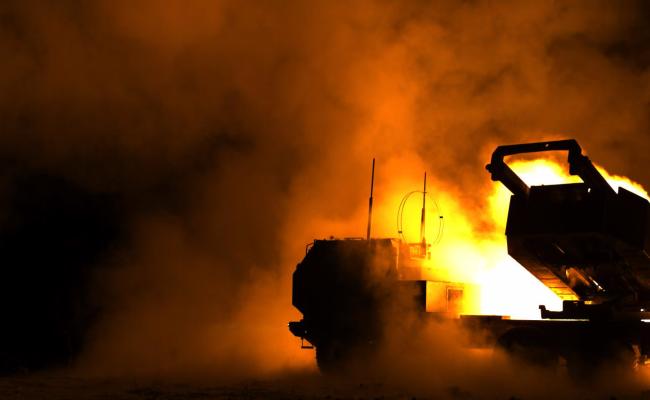Sweden Prepares for Massive Shift Within Security and Defense
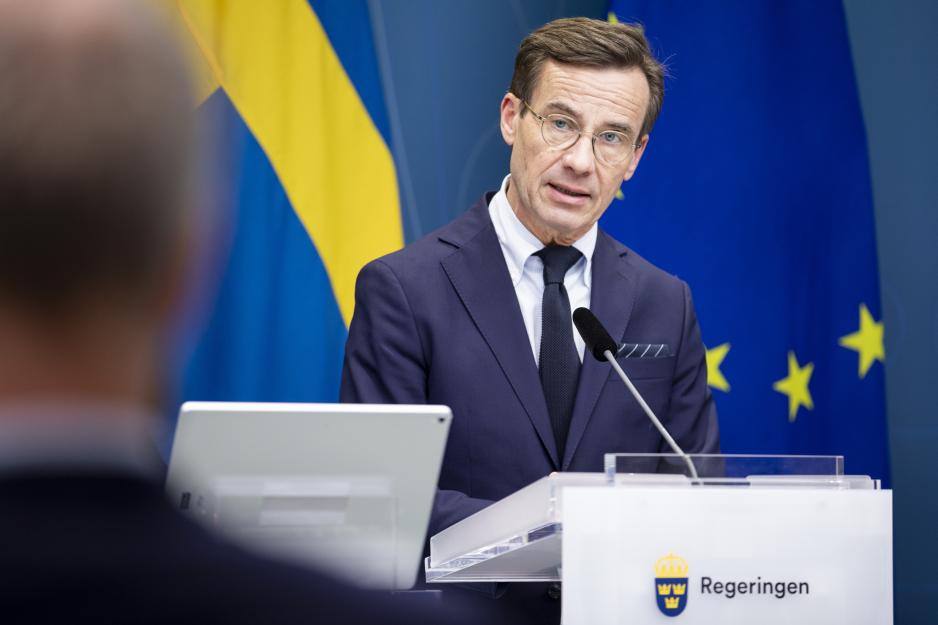
Upcoming cross-political analyses of security policy and how the strengthening of both military and civilian defense can be realized is important in this greatly deteriorated security situation, Swedish Prime Minister Ulf Kristersson (M) pointed out at a press conference earlier this week. (Photo: Ninni Andersson/ the Swedish Government Offices)
The foundation for Sweden’s new security and defense policy is to be laid by a forum for forming broad political settlements. The Swedish Armed Forces have also submitted a future study. The Prime Minister emphasizes the seriousness of the present time.
"We currently find ourselves in the most serious security policy situation since WWII with a European great power waging war against a neighboring country. The government's focus is to stand up for democratic values and to protect Swedish interests. Försvarsberedningen will analyze the developments of the outside world with particular emphasis on our vicinity," said Swedish Prime Minister Ulf Kristersson (M) on Tuesday last week.
The government then tasked Försvarsberedningen, where all parties of the Swedish parliament are represented, to lay the groundwork for the country's largest security and defense policy shift in 200 years. Both the prime minister, the minister of defense and the minister of civil defense, presented the complex mission.
Försvarsberedningen is, more specifically, a forum for consults between the government and parliamentarians in the Riksdag – of which the aim is to reach as broad an agreement as possible on policy-making in the aforementioned field. The forum has eleven members, including former Minister of Defense Peter Hultqvist (S).
The outlined backdrop of their imminent work is "Russia's great willingness to take risks, both military and politically, to reshape Europe's borders with violence" and "lowered threshold for the military use of force".
Försvarsberedningen's mission
– The forum will analyze the following topics: Central international development features and consequences for Swedish security and defense policy; the effects of a Swedish NATO membership, as well as defense policy starting points and goals for military and civil defense.
– A partial report and a complete report – focusing on security policy, the realization of the parliament's 2020 decision on the design and development of the armed forces, as well as long-term economic frameworks – are due in April and June 2023, respectively.
– A report focusing on the organization of the total defense is due in April 2024.
– Based on these reports and other knowledge, the Swedish government will draw up proposals for the parliament.
In the task description, the government sets up a four-part policy: 1) Sweden will join NATO and realize the agreement with Turkey and Finland, 2) the foreign policy must protect Swedish interests and promote democratic values, 3) the armed forces are to be strengthened with at least 2 percent of the gross national product (GNP) by 2026; investment in civil defense not included – and 4) the support for Ukraine is to be increased.
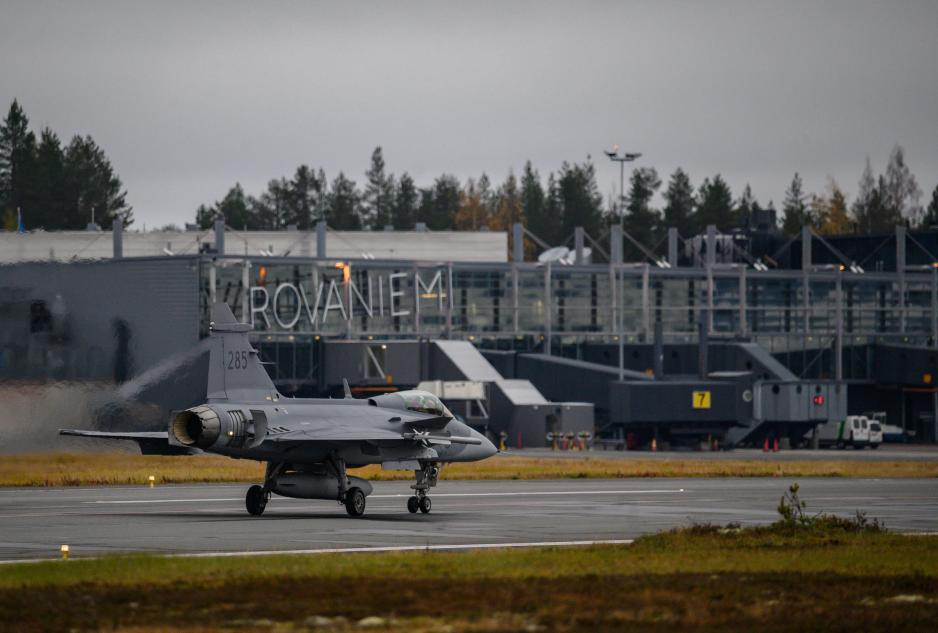
The Swedish fighter JAS 39 Gripen from Norrbotten air flotilla at the Rovaniemi Air Base, Northern Finland, during the Finnish-Swedish air defense exercise Ruska 22 in October. (Photo: Jesper Sundström/the Swedish Armed Forces)
The Swedish Armed Forces look to the future
Last week, the Swedish Armed Forces perspective study 2002 was also published. It was carried out in the period from 2019-2022, through contributions from all functions and branches of defense, as well as various relevant authorities and actors. Among these is the Swedish Defence Research Agency (FOI).
The study has also been part of NATO's strategic foresight analysis and includes cooperation with Finland and Norway.
The final report was delivered to the Ministry of Defense on the 31st of October, shortly before Chief of Defense Micael Bydèn gave the government his military advice on Swedish NATO membership and proposals for capacity development. Among other things, he recommends that the Swedish Armed Forces should be given additional resources and that such grants are based on the perspective study and coordinated with NATO's planning process.
"We cannot rule out a more serious development. We are not ruling anything out now," General Bydèn pointed out when he presented his advice.
The perspective study consists of a military strategic analysis up until 2045 and suggestions for a future structure within the Armed Forces. It incorporates knowledge and assessments for further political decision-making – beyond and alongside the adopted defense policy direction and current plans.
Some key points
The study's analysis results imply that the long-term level of ambition for the Swedish Armed Forces must be raised, as Bydèn suggests.
The growth that will take place for the Swedish Armed Forces in the time leading up to 2030, will strengthen the capacity to take more responsibility in an alliance context for security in its own vicinity and internationally. However, it is not considered sufficient in the face of uncertain global development:
"Rapid changes in international politics and a continued high level of tension is to be expected, something that entails that Sweden must be able to handle a high level of conflict both globally and regionally."
For example, the study emphasizes that extra measures must be made to increase regional presence, as well as strengthen the ability to receive and facilitate for allied forces. As High North News has previously reported, the chief of defense suggests an establishment of a new military force in Kiruna municipality, Northern Sweden.
The suggested future defense structure will "through its size, flexibility, and modern content provide a significant addition to Sweden's and NATO's capacities in Northern Europe above all." It is outlined that NATO membership requires more military units with high preparedness, i.a.
Furthermore, the study suggests an expansion of the Swedish Armed Forces of about 40 000 people and an increased share of those in service in readiness.
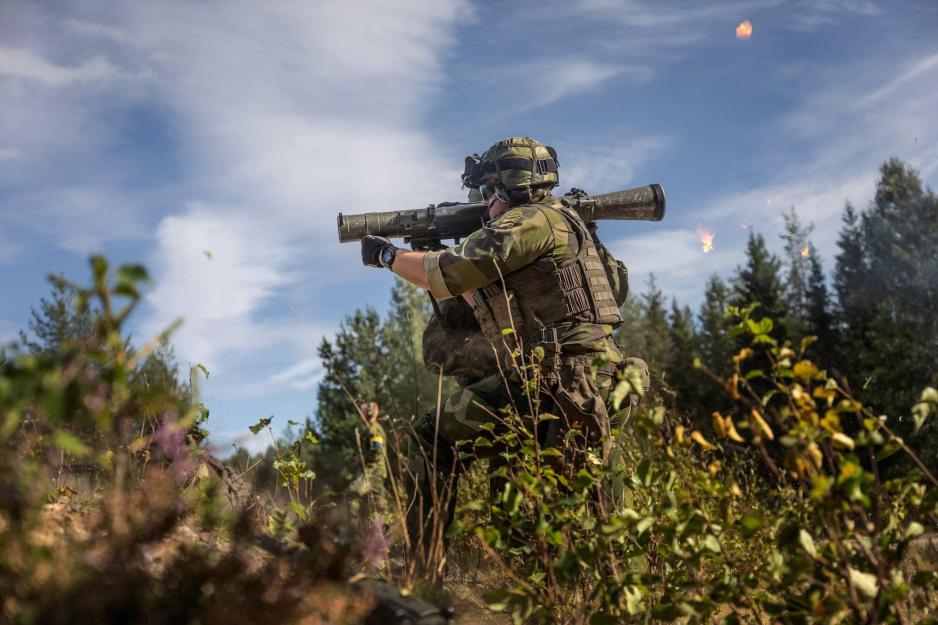
In August, the Swedish Armed Forces carried out a large control of the army forces' ability to move quickly to Northern Sweden and solve combat tasks there. (Photo: Bezav Mahmod/the Swedish Armed Forces)
Core developmental features
Considering the context of the alliance, the military strategic analysis points out that Russia will have a higher threshold for launching a military attack on Sweden as a NATO member. At the same time, Sweden will face a different threat level and an increased risk of strikes below the limit of armed attacks.
In the outlined future perspective, Russia will still be the greatest threat in Sweden's vicinity. As a result of the war in Ukraine, the Russian military muscles will be weakened, at least temporarily, and the country's future uncertain. It is expected that its prevailing great power ambitions and willingness to use military force will persist unless the country undergoes a profound regime change.
Although a positive regime change, seen from a Western perspective, were to happen, a Russian military threat to Sweden's vicinity cannot be written off. This is highlighted in the study with reference to the fact that the risk of authoritarian backlash and military revanchism (desire for revenge) will persist for several decades.
Uncertainty in the future is particularly linked to how the great power competition between the US and China will proceed. The assessment is that this battle will be central in the coming years' geopolitics and that future American priorities and direction will continue to be decisive for European security.
Despite a strengthened American focus on Asia, the following is assumed: "The transatlantic link will most likely be maintained as long as Russia poses a direct threat to Europe and thus American interests."
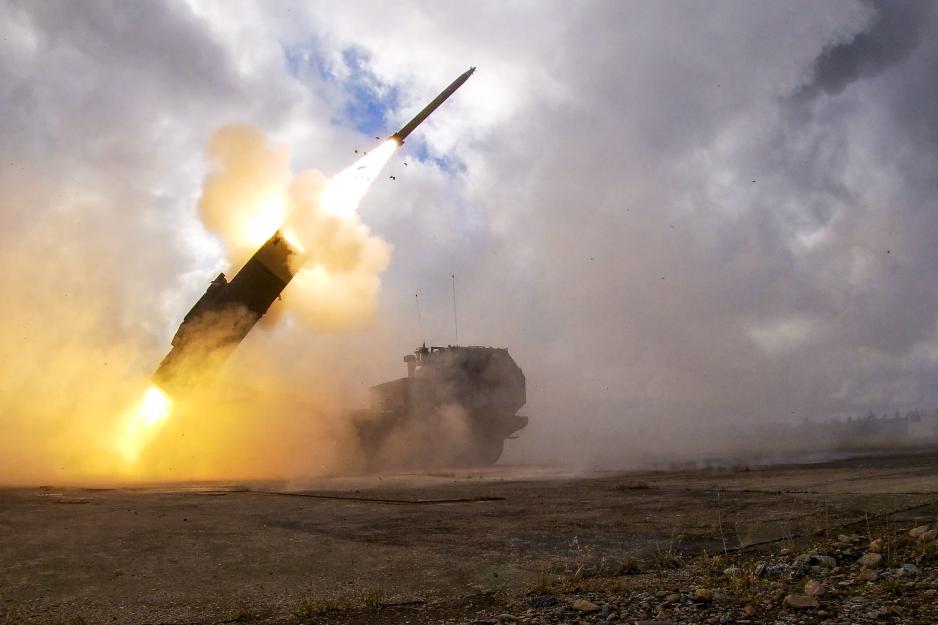
In September, the Swedish Armed Forces and American special forces trained on combating targets in Northern Sweden – with the American High Mobility Artillery Rocket System (HIMARS) for long-range precision fire. (Photo: Devin Klecan/US Army)
Prospects in the Arctic
The Swedish Armed Forces envision that development within resource extraction and new shipping routes will affect the Arctic region, also in regard to security. While the established relationship between the Arctic coastal states (Norway, Denmark, Canada, the US, and Russia) is based on cooperation, the situation may change quickly, the study points out.
The study goes on to reference existing and expected Russian activities:
– Russian military rearmament in the Arctic will likely continue and thus increase the militarization of the region, it is expected. The rearmament is seen in the context of Moscow being especially concerned with securing the Northern Fleet's nuclear second-strike capability.
– The militarization can be reinforced by Russia's warfare against Ukraine and suspension from the Arctic Council, and have a long-term negative effect on the region's stability and security.
– The risk of further militarization and great power competition is also identified in NATO's eastern expansion: With Finland as a member, the alliance will have a border close to the Northern Fleet – Russia's most important military resource.
– The continued use of the Northern Sea Route as a geopolitical means of power to maximize influence and economic profits is also expected. In addition, Russia will have a coastline to defend for the first time ever.
– Furthermore, Russia's strengthened cooperation with China, whether it runs deep or only has a temporary utility-based character, will have extensive ripple effects in the Arctic, it is assumed.
When it comes to the Swedish approach to the Arctic region, only the following is derived from the study: The ambition to strengthen the basic Swedish defense abilities is concretized with strengthening the ability to operate in special Swedish and Nordic environments – Arctic and sub-Arctic environments, archipelagos, as well as in the Baltic Sea area.
With regard to the security policy situation in Northern Europe and Arctic, it is also expected that the UK will continue to prioritize the area – in the role as the leading European great power.
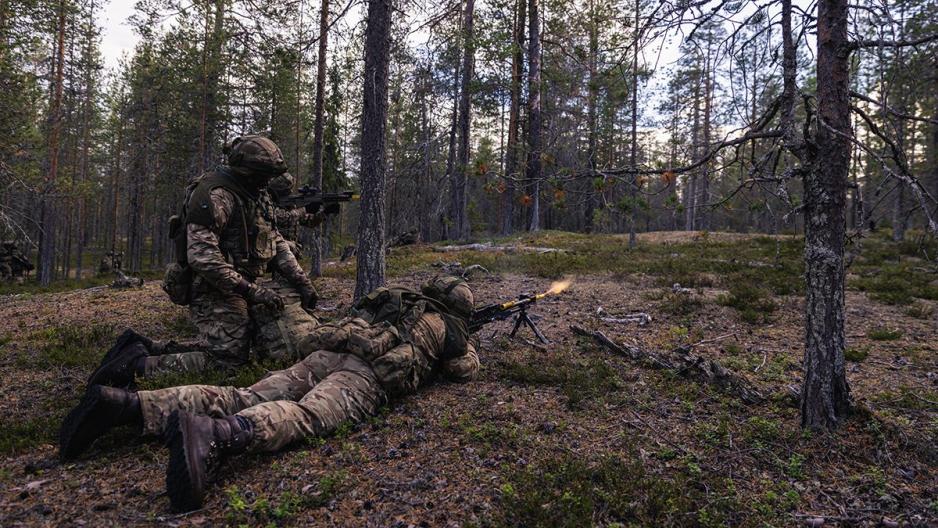
In early autumn, Finnish, Swedish, and British army soldiers practiced tactical and technical cooperation in an Arctic environment, then in Northern Finland. (Photo: Samuli Haapala, COMCAMFI/the Finnish Armed Forces)
Faith in the future on behalf of the Nordic region
The report also directs a hopeful look towards the Nordic region's future and its contribution in a wider international context:
"The culturally intertwined Nordic countries with their strong economies and wealth of resources form a stable foundation for constructive and strong cooperation. The Nordic region's geostrategic significance has increased and its security policy will be changed by Finland and Sweden's NATO membership. More extensive Nordic cooperation, both in the Arctic and the Baltic Sea region, will probably strengthen both NATO and the EU."
Also read
This article was originally published in Norwegian and has been translated by Birgitte Annie Molid Martinussen.


